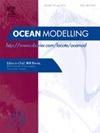Seasonal predictability of SST anomalies and marine heatwaves over the Kuroshio extension region in the Copernicus C3S models
Abstract
The warm sea surface temperature anomalies (SSTAs) and marine heatwaves (MHWs) in the Kuroshio Extension (KE) region have profound impacts on local and surrounding ecological and climatic systems. This study evaluates the seasonal prediction skills of KE-SSTAs and KE-MHWs based on six dynamical models from the Copernicus Climate Change Service (C3S) using different observational datasets for verification and further investigates the main sources of predictability. The results show that current dynamical models can provide reliable predictions for KE-SSTAs for up to about 4 months, but they are challenging to accurately predict the occurrence of KE-MHWs. Compared with single models, the C3S multi-model ensemble mean is usually more skillful in predicting KE-SSTAs and KE-MHWs at most lead times. With lead time increasing, the dynamical models tend to underestimate the mean intensity and annual frequency of the KE-MHWs and overestimate their mean duration. The performance of models in predicting KE-SSTAs is largely dependent on their ability to predict the Pacific Decadal Oscillation, Interdecadal Pacific Oscillation, and El Niño–Southern Oscillation which all significantly influence the KE-SSTAs. The results indicate that these three climate modes are the main sources of seasonal predictability for KE-SSTAs and KE-MHWs. These results provide a deeper understanding of the dynamical seasonal predictability of SSTAs and MHWs in the KE region.

 求助内容:
求助内容: 应助结果提醒方式:
应助结果提醒方式:


